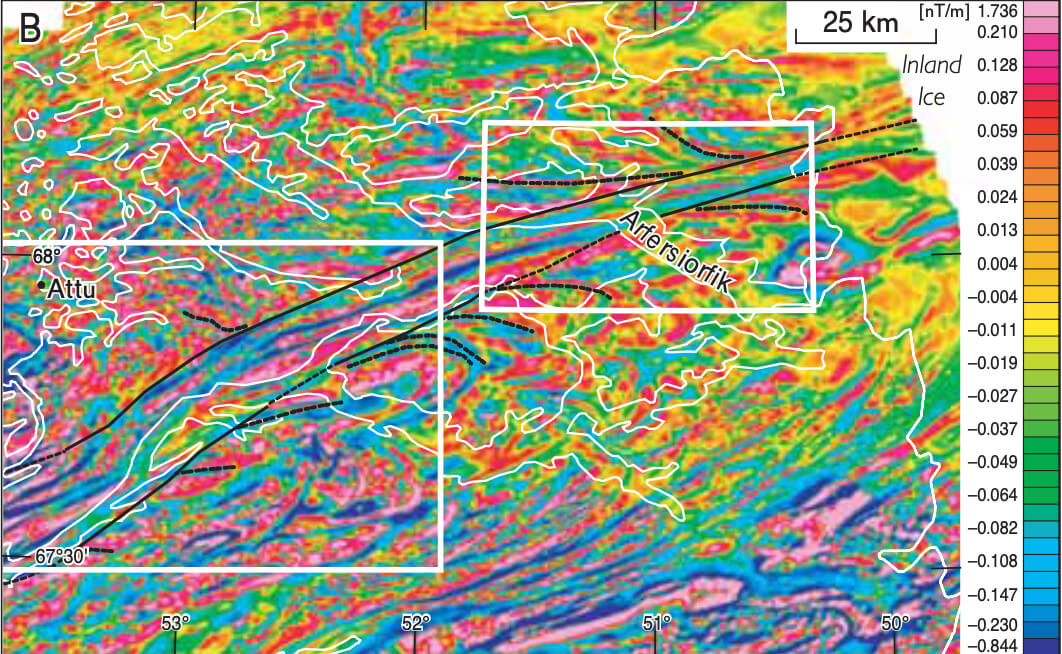
How to Cite
Share
Abstract
The Nordre Strømfjord shear zone in the fjord Arfersiorfik, central West Greenland, consists of alternating panels of supracrustal rocks and orthogneisses which together form a vertical zone up to 7 km wide with sinistral transcurrent, ductile deformation, which occurred under middle amphibolite facies conditions. The pelitic and metavolcanic schists and paragneisses are all highly deformed, while the orthogneisses appear more variably deformed, with increasing deformation evident towards the supracrustal units. The c. 1.92 Ga Arfersiorfik quartz diorite is traceable for a distance of at least 35 km from the Inland Ice towards the west-south-west. Towards its northern contact with an intensely deformed schist unit it shows a similar pattern of increasing strain, which is accompanied by chemical and mineralogical changes. The metasomatic changes associated with the shear zone deformation are superimposed on a wide range of original chemical compositions, which reflect magmatic olivine and/or pyroxene as well as hornblende fractionation trends. The chemistry of the Arfersiorfik quartz diorite suite as a whole is comparable to that of Phanerozoic plutonic and volcanic rocks of calc-alkaline affinity.
How to Cite
Share
Copyright (c) 2006 Kai Sørensen, John A Korstgård, William E Glassley, Bo Møller Stensgaard

This work is licensed under a Creative Commons Attribution 4.0 International License.
Downloads
Editors: A.A. Garde and F. Kalsbeek
Central West Greenland exposes a large region of Archaean continental crust that was rifted and subsequently reworked in the Palaeoproterozoic during the Nagssugtoqidian and Rinkian orogenies. The southern margin of the Nagssugtoqidian orogen with its deformed Kangâmiut dykes is a classic example of an orogenic [...]









